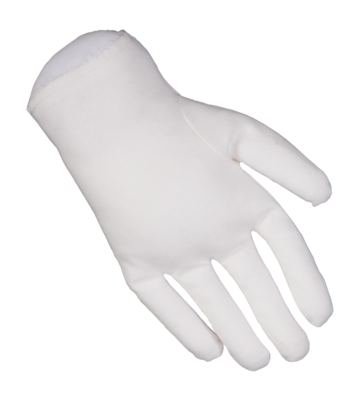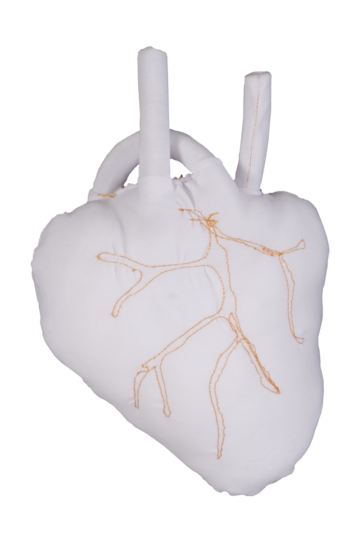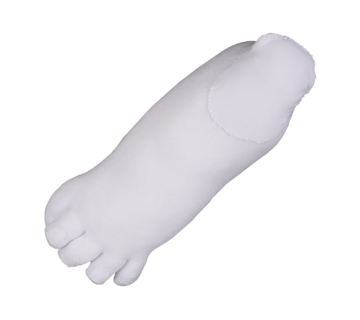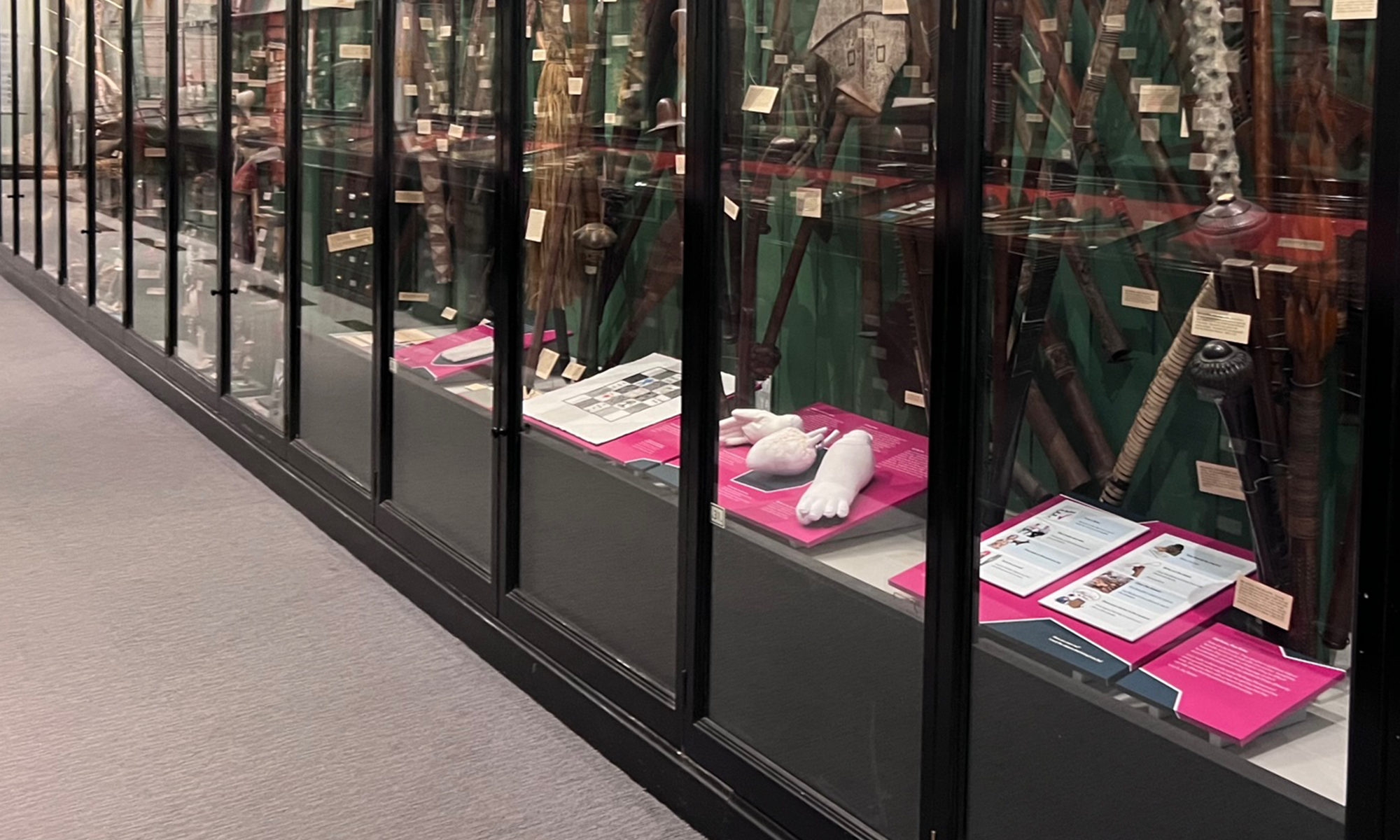A Feeling Like Wearing a Glove

A Feeling like Wearing a Glove by Juliet Eccles. A clothwork hand representing Juliet's recovery from paralysis. Cloth and polyester. United Kingdom. Loaned to the Pitt Rivers Museum in 2023.
Aged thirteen, Juliet broke her neck during a riding accident that paralyzed her from the neck down. One doctor believed she would need an Iron Lung, but an RAF doctor believed she could make a recovery. After nine months in hospital and a further six at an RAF rehabilitation centre, Juliet made a partial recovery. While left with imbalanced movement and impaired feeling in her hands, Juliet returned to riding and went on to win dressage while representing Riding for the Disabled.
Juliet, E., An Artist who also happens to be disabled
A Kintsugi Heart

A Kintsugi Heart by Juliet Eccles, representing her relative's experience of multiple heart surgeries and their resilience. Cloth and Polyester with gold thread, United Kingdom. Loaned to the Pitt Rivers Museum in 2023.
Patrick was born with a hole in the heart. He had open heart surgery aged four to mend a leaky valve. The surgeons brutally cut him from his neck to his navel and broke his rib cage to mend the heart. Four decades later, with modern technology the surgeons repaired the valve again with a less invasive procedure. He is now a healthy adult aged fifty-six. Gold’s corrosion resistance makes it ideal for the high degrees of sterility required for medical instruments. Kintsugi can be seen as a metaphor for resilience, healing, and beauty in its brokenness. It is the Japanese art of repairing broken pottery by mending the breakage with lacquer mixed with powdered gold.
Juliet, E., An Artist who also happens to be disabled
Bent Big Toes

Bent Big Toe by Juliet Eccles. A clothwork foot, representing Christopher Houston (1970–2008) and his condition of F.O.P. (Fibrodysplasia Ossificans Progressiva). Cloth and Polyester, United Kingdom. Loaned to the Pitt Rivers Museum in 2023.
Chris (1970 to 2008) lived with Fibrodysplasia Ossificans Progressiva. A debilitating disease where bone forms in muscles, other soft tissues of the body and joints, restricting movement. The first sign is being born with crooked big toes. A surgeon’s brutal intervention to straighten Chris’s toes triggered a flare up that made the surgeon realise his mistake. His words - “Oh my god, what have I done” - resonated in my mothers’ ears. The genetic mutation on the white blood cell travels to where there is a flare up and slowly over the years, your body becomes distorted and encased in bone.
Juliet, E., An Artist who also happens to be disabled

